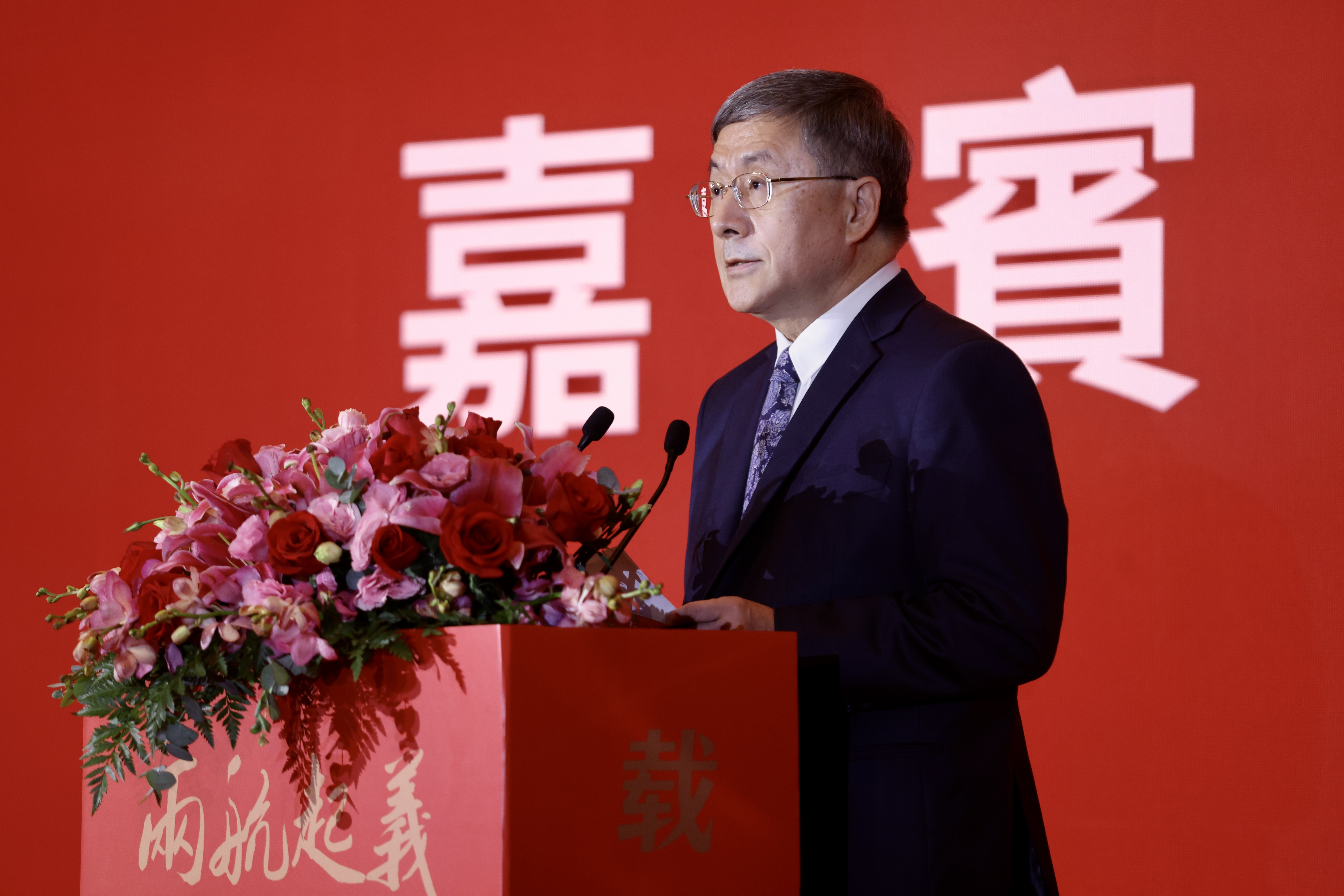
On Friday, the country’s first homegrown narrowbody passenger jetliner, the C919, touched down at Hong Kong International Airport, launching a three-day commemoration of a 1949 triumphant patriotic labor movement amid the city’s intensified efforts to foster stronger national pride among residents of the Hong Kong Special Administrative Region.
Flight CA101 landed in Hong Kong and was welcomed with a water spray after departing from Beijing earlier in the day. On Sunday, as flight CA104, it will complete the commemorative journey, flying from Hong Kong to Tianjin, covering the route taken when the “Uprising of the Two Airlines” occurred at Hong Kong’s former main air hub, Kai Tak Airport, on Nov 9, 1949.
At Friday’s event launching ceremony, an association dedicated to the uprising in Hong Kong revealed at the event that they are now spearheading a major initiative to build a monument commemorating the historic 1949 uprising at the original Kai Tak Airport site, where the patriotic labor movement broke out.
Seventy-six years ago, the daring operation was sparked off when 12 aircraft from the then-Hong Kong-based China National Aviation Corp and the Central Air Transport Corp deviated from their scheduled routes from Kai Tak and instead flew to Beijing and Tianjin, delivering the aircraft to the then-new government under the leadership of the Communist Party of China (CPC).
The 12 aircraft that flew north — along with other Kuomintang planes left on the mainland and later restored by the two airlines’ technical staff — became the seed fleet for China’s civil aviation.

Speaking at the event on Friday, Deputy Chief Secretary for Administration Warner Cheuk Wing-hing lauded the commemorative flight initiative as “a model for a soft, heartfelt, and relatable approach to patriotic education”, through which national identity can be naturally nurtured.

Zhan Zhong, president of the China National Aviation Corp (Group) Ltd — one of the airlines involved in the uprising — remarked that the patriotic spirit and dedication to the nation displayed by those participating in the uprising form a vital part of the country’s “red spirit lineage”, an “invaluable legacy” that must be passed down through the generations.
ALSO READ: HK students: Naval ships 'mind-blowing', inspire national pride
Starry Lee Wai-king, convenor of the SAR government’s high-level working group on patriotic education, agreed, and stressed the need to help youth “recognize this currently largely overlooked history period in Hong Kong’s public discourse”.
In February, the city’s Civil Aviation Department opened a dedicated exhibition on the uprising at the Aviation Education Path, aiming to raise public awareness of this pivotal event and of the country’s civil aviation advancements, thereby fostering a stronger sense of national pride in the city.
Since the uprising, the civil aviation industry in China has developed rapidly, and recently produced the country’s first homegrown narrowbody passenger jetliner, the C919, which is on par with the likes of the US’ Boeing 737 and the European Airbus A320 family.
Cheuk said that the C919 marks a “major milestone” and a “national technological triumph” in China’s aviation advancement, recalling how the aircraft drew large crowds when it twice did a fly-past over the city’s iconic Victoria Harbour during its maiden flight outside the Chinese mainland – a moment he described as “unforgettable to this day”.
Cheuk said that the SAR will leverage its well-established status as an international aviation hub and its institutional strengths stemming from the “one country, two systems” framework to help propel the C919 into the global market.
With its extensive experience and comprehensive facilities, the Hong Kong International Airport is fully primed to support overseas maintenance for the C919, he said, noting that the Hong Kong International Aviation Academy is also drafting plans to ramp up training to ensure there is a skilled talent pool to service the C919 within the city.
Pointing to Hong Kong’s robust legal framework, sound financial system, and status as the largest offshore renminbi business center globally, Cheuk said he has confidence in the city’s goal to establish a nexus for aircraft leasing, playing to the global expansion of Chinese airliners.
READ MORE: National pride lights up Hong Kong
When announcing the plan to erect a monument to the uprising at the original Kai Tak Airport site in Kowloon — now known as the Kai Tak Cruise Terminal — Wang Jie, president of the Hong Kong Party of China National Aviation Corp and Central Air Transport Corp — an association dedicated to the uprising — said, “It’s destined to become both an enduring landmark honoring the patriotic feat and a vital new base for patriotic education in Hong Kong.”
Meanwhile, in Tianjin, where the aircraft that took part in the uprising landed at what is now Tianjin Binhai International Airport, an exhibition hall dedicated to the uprising is set to soon open to the public.
According to Cui Xiaofeng, director of China National Aviation Holding Corp, the hall will be officially opened to the public after this week’s commemorative flight.

“It’s truly a tangible, evidence-based tribute to this pivotal patriotic move, and is expected to stand as a key patriotic education base in the region”, he said.
Friday's ceremony in Hong Kong also witnessed Tianjin’s exhibition hall sign cooperation agreements with Wang’s association and the Committee On Aero Industry at the Hong Kong Chinese Enterprises Association.
Contact the writer at wanqing@chinadailyhk.com



